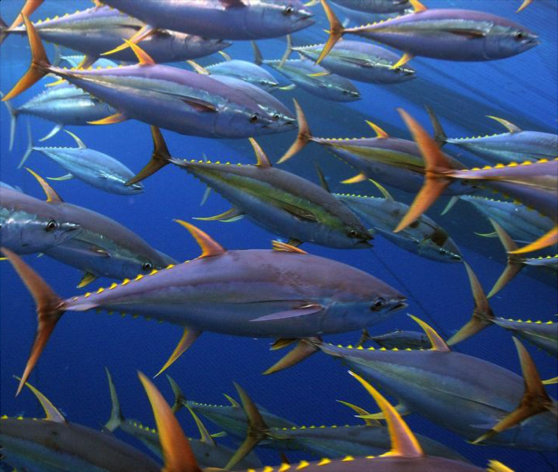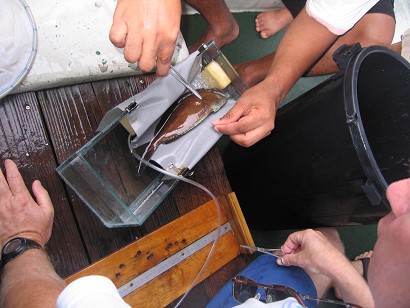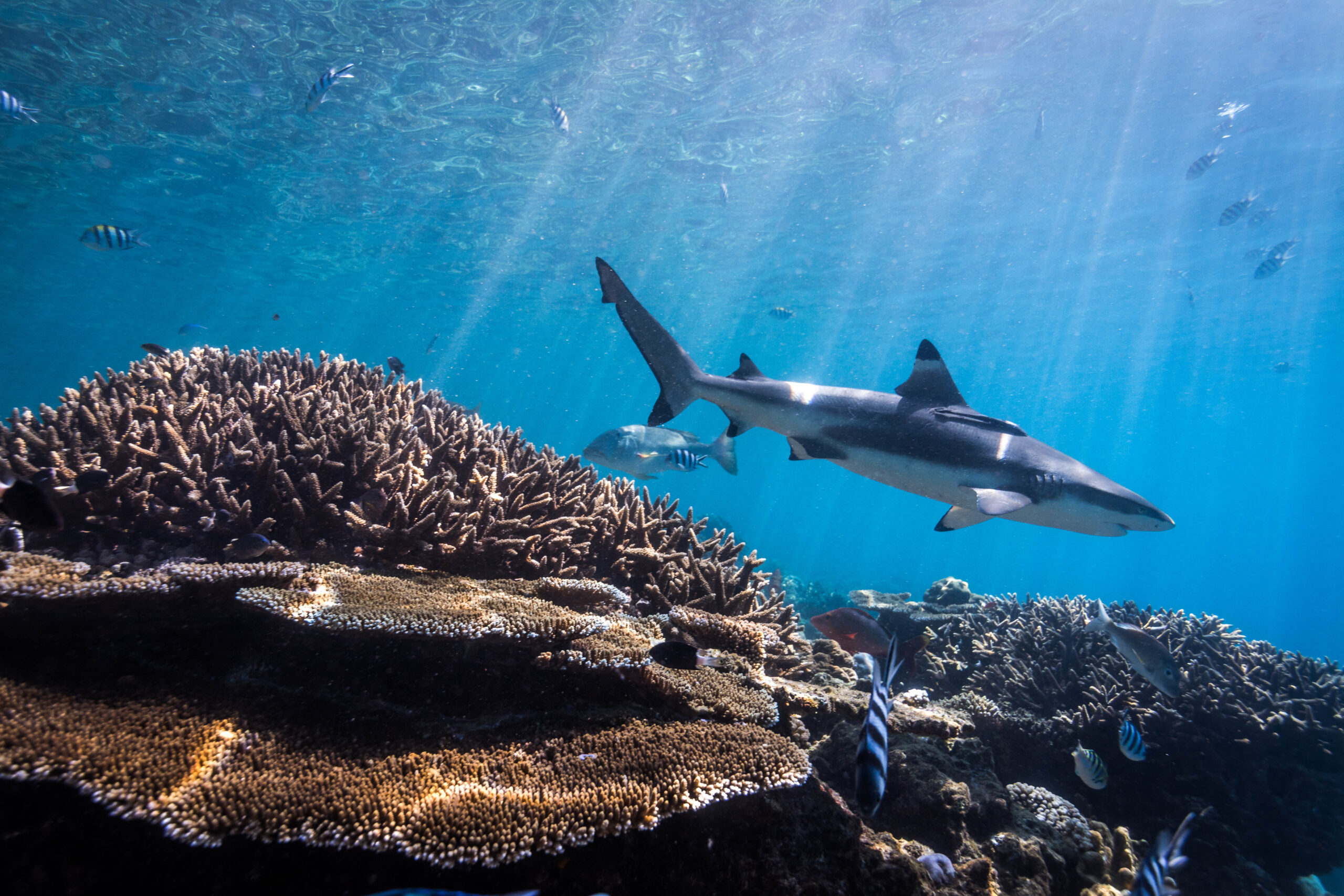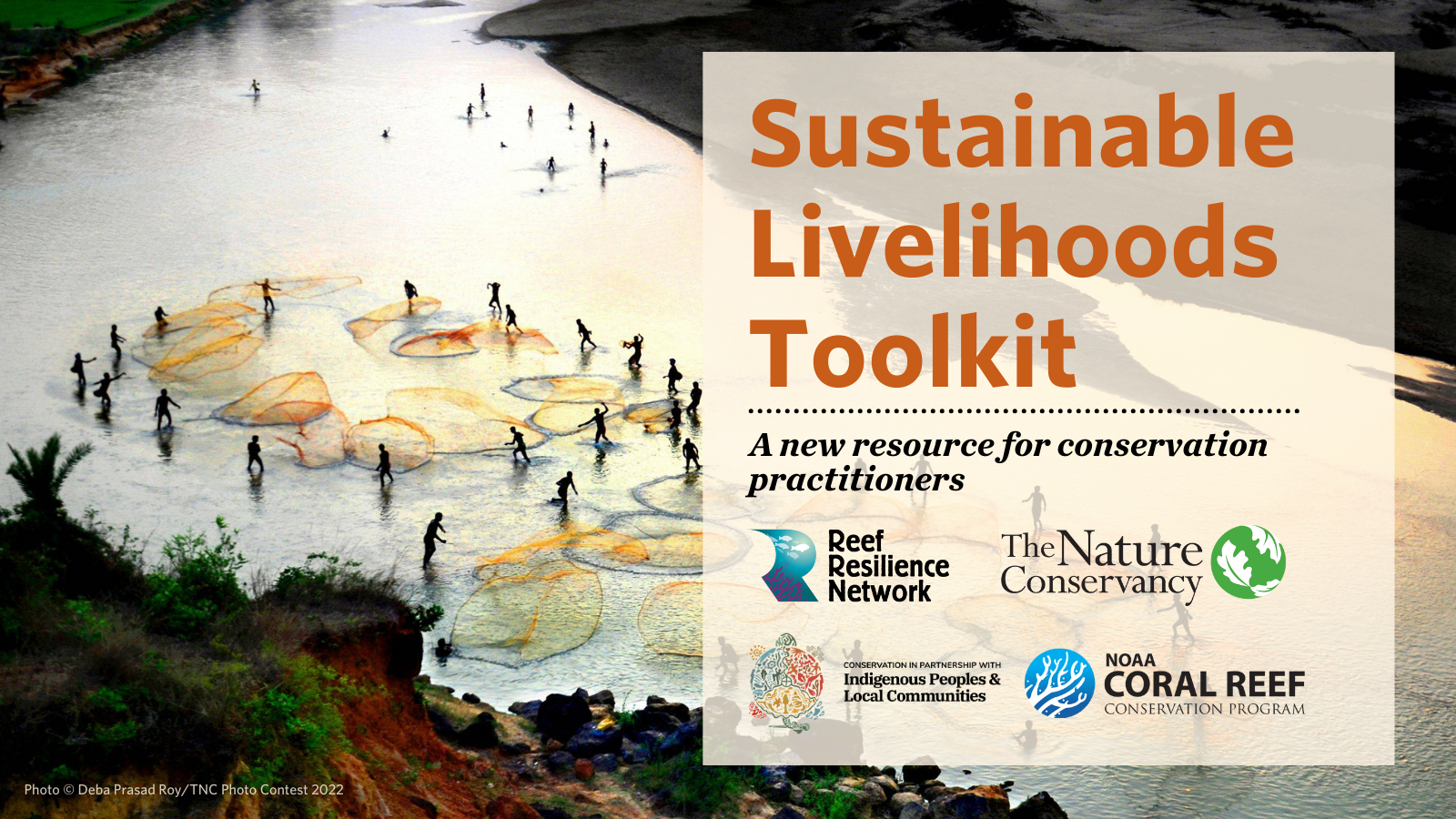Making Use of Acoustic Telemetry to Improve Management of Spawning Aggregation Fishery in the Seychelles
Location
Praslin Island, Seychelles
The challenge
Understanding the behavior of threatened species can increase the effectiveness of conservation efforts and reduce the cost of intervention. The use of marine protected areas (MPAs) is being promoted as one of the tools for the conservation of marine species. However, the effectiveness of MPAs is dependent on their ability to protect target species. Site-attached species with small home ranges are more likely to benefit from small MPAs than more mobile species with large home ranges. Many reef fishes with small home ranges are known to migrate long distances, during specific times of the year, and form large transient spawning aggregations that can last for several days. These migrations can take them outside the boundaries of MPAs where they are unprotected. In such circumstances these species need to be managed using a range of management options which can offer them a certain degree of protection while participating in spawning aggregations.

Large migratory fish such as tuna are unlikely to be protected by an MPA.
One of the rabbit fishes, the Shoemaker spinefoot (Siganus sutor) is a coral reef-associated herbivorous species that is known to form large transient spawning aggregations. The species is endemic to the Western Indian Ocean and is a commercially important target species in much of the region, often constituting more than 40% of inshore reef fishery catch by weight. In the Seychelles islands, Shoemaker spinefoots form monthly spawning aggregations at multiple sites around the time of the full moon between September and June. The locations and timing of these aggregations are known by the local fishers and a fishery has developed that specifically targets them. During these periods, catch per unit of effort increases and large quantities of spawning fishes are caught, sometimes even before they have had a chance to reproduce. This situation raises serious concerns regarding the health of the stock and undermines the effectiveness of nearby MPAs in protecting this species.
Actions taken
To come up with management options to better protect spawning aggregations of Shoemaker spinefoots, a joint study was undertaken by the Seychelles Fishing Authority (SFA) and the Praslin Fishers Association (PFA). The aim of the study was to use acoustic telemetry to collect behavioral information on fish attending spawning aggregations that could be used to guide conservation efforts and to raise awareness of the local communities on the need for sustainable exploitation of spawning aggregations.The study set out to (1) characterize the residency time of Shoemaker spinefoots at known spawning aggregation sites, (2) describe the lunar and diel pattern of arrival and departure at the sites, and (3) determine fidelity to specific spawning sites. Once the degree of site fidelity to specific spawning aggregation sites was determined, the study investigated whether the selection of spawning aggregation sites was innate or socially mediated through translocation of acoustically tagged fish between two sites. Monitoring of acoustic signals coming from the tagged fish was undertaken at the two study sites as well as at three other spawning aggregation sites in the area using an array of acoustic receivers. When a transmitter came within range of an acoustic receiver, the tag ID date and time was automatically recorded. From the logs researchers were able to reconstruct fish behavior, such as residence time, fidelity, and time of arrival and departure. A secondary aim of the study was to promote collaboration among staff of the SFA and members of PFA.

Implantation of acoustic transmitters in Shoemaker spinefoot. Photo © Jude Bijoux
How successful has it been?
The study was highly successful as it was able to reduce conflict between marine scientists from SFA and fishers from the island of Praslin. Collaboration between researchers and fishermen allowed experiences to be shared, and built up camaraderie. The acoustic telemetry study was able to accurately determine the lunar and diel timing of arrival and departure of aggregating fish at the spawning site, as well as documented spawning site fidelity and residence time. Unexpectedly, the study showed that there was a constant turn-over of fish participating in the spawning aggregation and that the amount of fish participating was much higher than was previously believed. The translocation study found that translocated fish display a wide range of behaviors, which included: 1) homing back to their original spawning site, 2) adopting the site where they were translocated, and 3) confusion, which caused them to wander between sites. From an awareness point of view, the study focused the attention of the public, especially the fishers on Praslin, on the plight of rabbit fish spawning aggregation sites and the threat that overfishing may pose. As a result, there was strong support from the Praslin fishing community during the drafting of the demersal fisheries management plan to limit the number of fish traps used during spawning aggregation periods.
Lessons learned and recommendations
Social and governance issues:
- It is important to have jointly implemented activities between fishers and fisheries management organizations. These activities create the space for people from both sides to meet, discuss issues and share experiences.
- Once these working relationships between fishers and staff of fisheries management organizations have been created, it is important to keep them going through continuous involvement in new projects and initiatives.
- The project was jointly implemented by SFA and PFA, and both partners actively participated in the project from its inception in the identification of research questions, sources of funding and implementation modalities. Equal involvement of both partners ensured that the project ran smoothly.
- Involvement of fishermen in research projects is a better tool for raising awareness compared to presenting them with the results at the end of the project.
- Fishermen know a lot about the behavior of fish species but they also have some misconceptions. Collaboration between fishers and scientists is thus encouraged so that fisher knowledge can be shared with scientists and scientists can also explain scientific principles to fishers and clear any misconceptions.
Scientific issues:
- Due to the high cost of acoustic transmitters (US $350) and receivers (US $1,300) not all known spawning aggregation sites in the study area could be instrumented and the number of fish that were acoustically tagged (39 at study No. 1 and 56 at study No. 2) were limited. In such circumstances where cost limits the sample size it is good to combine acoustic tagging with conventional tagging which is much cheaper and have the capacity to provide much needed additional data.
- The range at which the acoustic transmitters can be detected by the receivers is affected by ambient noise and can skew the results. Sentinel tags placed high in the water column at specific locations should be used to allow detection patterns to be more easily interpreted alongside change in detection efficiency.
- Only the spawning aggregation sites were monitored using acoustic receivers and as a result no data could be collected when fish were outside of the receivers array.
- Shoemaker spinefoot spawning aggregations can last up to seven days with fish arriving at the site as early as three days before the full moon and departing as late as three days after the full moon. Temporal protection measures at the spawning sites should coincide with these seven days.
- Most tagged fish arrive at the spawning aggregation sites at dawn and depart at dusk. It is believed that these fish were using the rising and setting of the sun as a means of navigation.
- Spawning fish showed fidelity to groups of closely related sites, indicating that fidelity is to a particular region and not necessarily specific sites. It is thus recommended that these spawning aggregation sites are managed by area rather than as independent sites.
Funding summary
This work was supported through grants from the Marine and Coastal Science for Management (MASMA) Programme (Grant No. MASMA/OR/2008/06) of the Western Indian Ocean Marine Science Association (WIOMSA) and from the Global Environmental Facility (GEF) Small Grant Program (SGP) to the Praslin Fishers Association (PFA) (Grant No. SEY/SGP/OP4/Y3/RAF/2010/05). Financial and logistical support was also provided by the Seychelles Fishing Authority (SFA) through the European Union (EU) from the sectoral policy support funds of the EU/Seychelles Fisheries Protocols under the Fisheries Partnership Agreement.
Lead organizations
Seychelles Fishing Authority (SFA)
Praslin Fishers Association (PFA)
Partners
Institut de Recherche pour le Développement (IRD)
GoS-UNDP-GEF Mainstreaming Biodiversity Project
Western Indian Ocean Marine Science Association (WIOMSA)


